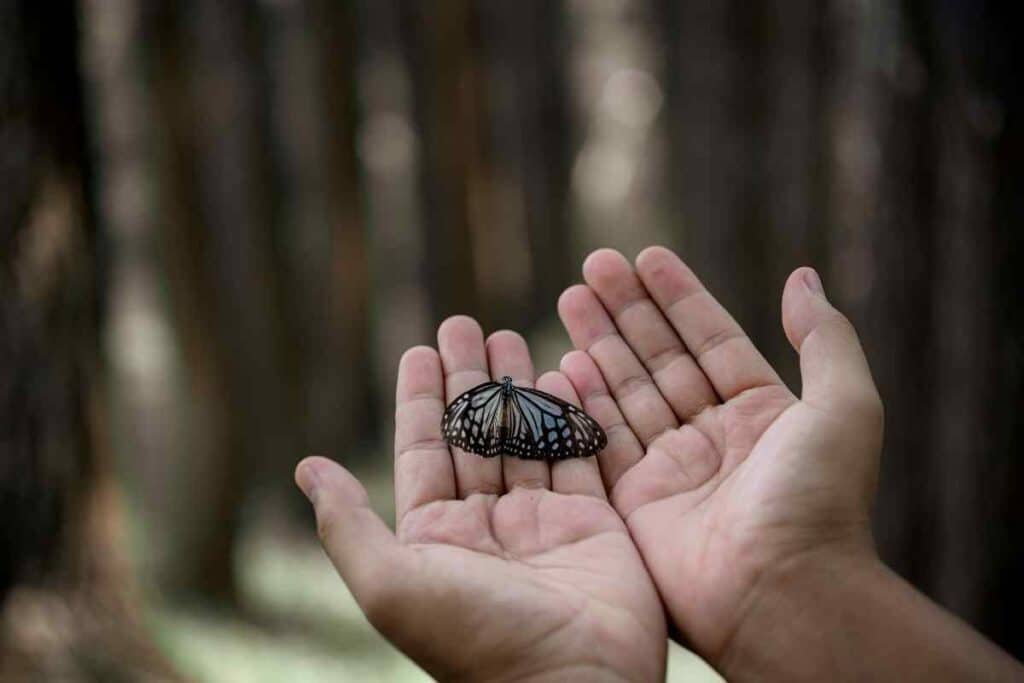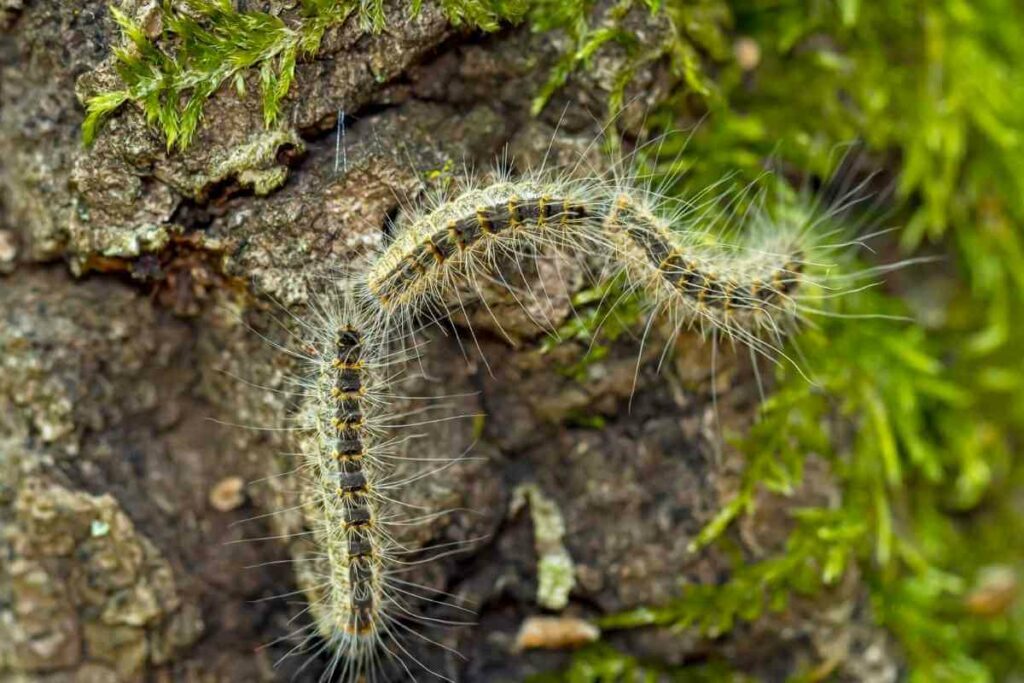“Do butterflies bite or sting?” should be the last thing on your mind while relaxing in the garden. These beautiful creatures couldn’t hurt a fly, even if they wanted to! Butterflies do not have biting mouthparts but actually drink their meals through a straw-like proboscis.
However, butterflies and moths aren’t so gracious when it comes to their young.
You need to be on the lookout for caterpillars that are more than capable of biting and stinging an unsuspecting hand, some with serious consequences.
In this article, we will look at the biting capabilities of the Lepidoptera family including the common garden species you should be careful to avoid.
Butterflies Cannot Bite Because They Drink Rather than Eat!
Remarkably, butterflies do not chomp down on vegetation or nibble at fruit.
They, like more than half of the world’s insects, are fluid feeders.

This means that butterflies subsist on a liquid diet that they suck up just as if they were using a drinking straw.
Their varied liquid diet includes:
- nectar
- honeydew
- and even seriously foul fluids like blood and urine
They simply are not built to bite and swallow solid food, meaning a bite from you is unlikely to be on the menu.
It Is Literally Impossible for Butterfly Mouthparts to Deliver a Bite
Butterflies are custom-built for fluid feeding.
They have no jaws or teeth.
Instead: Two key structures in the butterfly’s head facilitate fluid feeding.
Labial Palpi
Labial palpi are paired sensory projections that are on the head of the butterfly.
They are covered in olfactory nerve-endings and help the butterfly search for food and sense moisture conditions in their environment.
Like lips, the labial palpi also shield the feeding parts of the butterfly and the butterfly’s eyes when feeding off rotting material that may carry mites.
The Proboscis
The proboscis is the straw-like tongue the butterfly uses to suck up its liquid diet.
It is made up of paired grooved channels that link to create a tube for feeding. When not in use the proboscis is dismantled and rolled up into the butterfly’s head.
The butterfly dismantles and cleans if it becomes clogged by solids or particularly sticky substances. The food is sucked up using pumping muscular actions from the butterfly.

If the food source is dry, a butterfly can also release fluid in droplets from its abdomen to wet the food for fluid feeding.
More Details: This is a feature of mud puddling and you can learn more about it in our article “Do butterflies pee?”
There Is One Member of the Lepidoptera Family That Will Not Only Bite but Also Suck Your Blood
Calyptra thalictri also known as the Vampire moth is a Siberian moth species that actively sucks blood.
It is the only butterfly or moth species that is known to bite. It can drill its barbed proboscis into the skin and feed on human blood.
Blood is its preferred source of nutrition as it has more of the minerals it needs than more benign sources like fruits.
Male vampire moths use the blood to provide a nutritious nuptial gift to females during reproduction that can nourish the next generation of vampire moths.
Butterfly Larvae Can Give a Nasty Bite…And Worse
Experienced gardeners will know that caterpillars rather than butterflies can cause real human harm.
Caterpillars may appear fuzzy and cute, but their appearance belies an array of defence mechanisms that can leave you in pain or even needing a trip to the hospital.
Along with a Nasty Nip, Caterpillar Stings Can Cause Harm
A bite from a caterpillar is always a possibility especially given the powerful and efficient jaws that caterpillars have for chomping through vegetation.
Look Out: Their leaf-cutting mandibles are more than capable of giving a nip if we handle them.
However, a Bite Is the Least of the Damage a Caterpillar Can Do
Several caterpillar species can deliver a nasty sting to people who come into contact with their spines.
The hairs of certain caterpillars also are highly allergenic with some species being rated as a credible public health threat.
This means you have to be very careful when these critters are around.
Need to Know Caterpillar Species to Give a Wide Berth
Saddleback Caterpillars
The luminous green ‘saddle’ on the back of this North American moth caterpillar looks very interesting.
But if you touch it, you will find yourself on the end of multiple sharp spines.
This larva will even arch its back to drive the spines deeper into your finger or hand.
Oak Processionary Moth caterpillars
This British bug is the stuff of nightmares due to its venomous setae that are extremely irritating and capable of causing anaphylactic shock.

When these larvae hatch they seasonally process in large numbers in woodlands.
With each caterpillar carrying over 60,000 venomous setae, it is easy to see how they can be a public health hazard every year.
Puss Caterpillars
Also known as the “Toxic Toupee” this furry-looking caterpillar appears to be a shaggy mouse or an overgrown moustache.
But don’t be tempted to reach out and touch its “fur” as within its hairs are thousands of venomous spines causing a reaction so severe that it has been likened to white-hot pokers or breaking a bone.
First Aid for Managing a Caterpillar Sting
If you get stung by a caterpillar, the number one priority is to get the venomous spines out of your skin.
Without removing the spines, the pain and inflammation will continue. This is most easily done by using contact paper or sticky tape.
Place the sticky tape over the affected area to pull out the spine.
From Experience: Ice, anti-inflammatories and antihistamines can all help to provide relief as the sting subsides.
Rounding Up
Butterflies are not a major concern for bites and stings but you need to be extremely cautious around their caterpillars, especially if you actively remove them from your garden plants and vegetables.
Glove up and if in doubt about the type of caterpillar you need to deal with, do not handle it at all!


